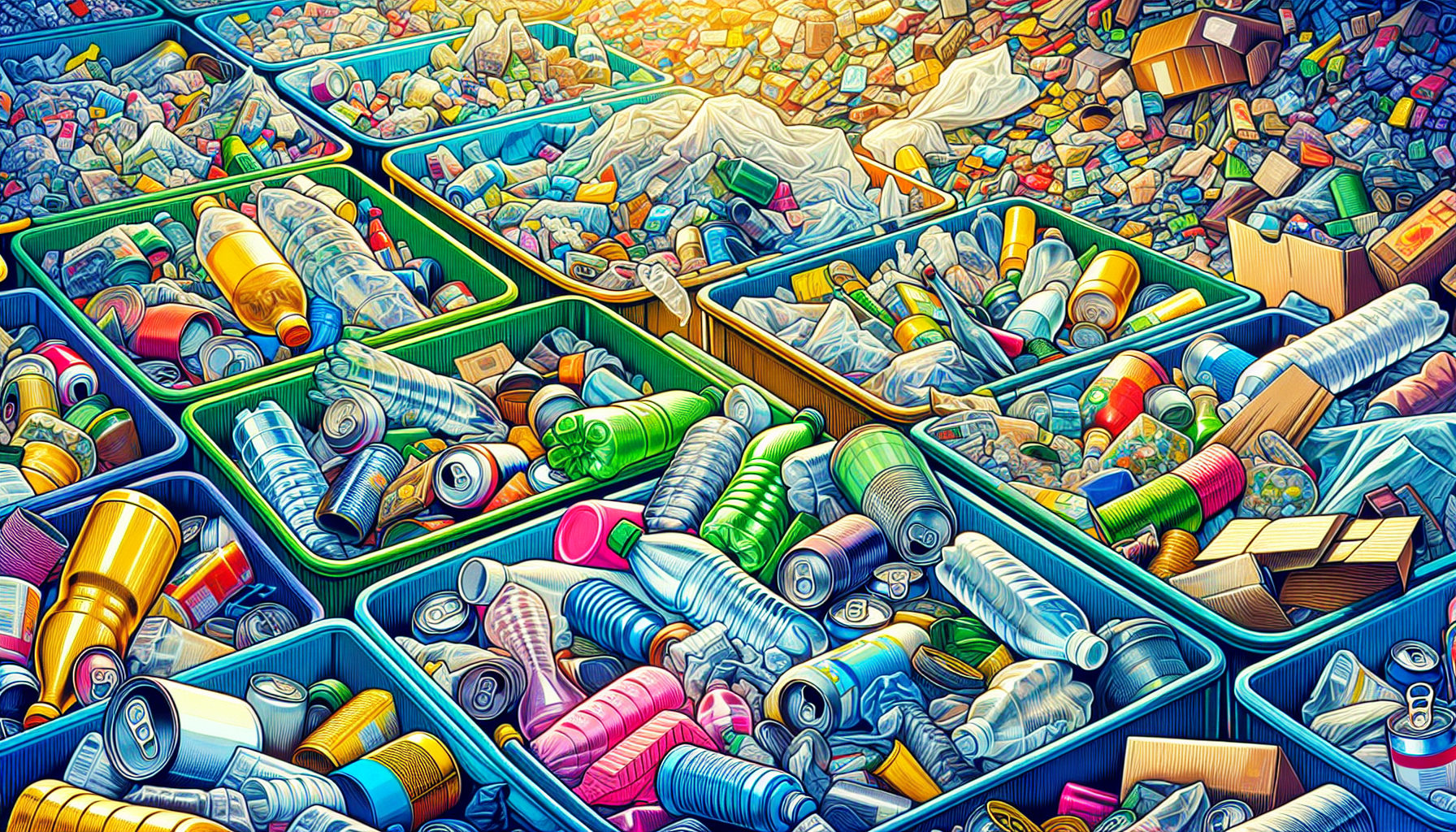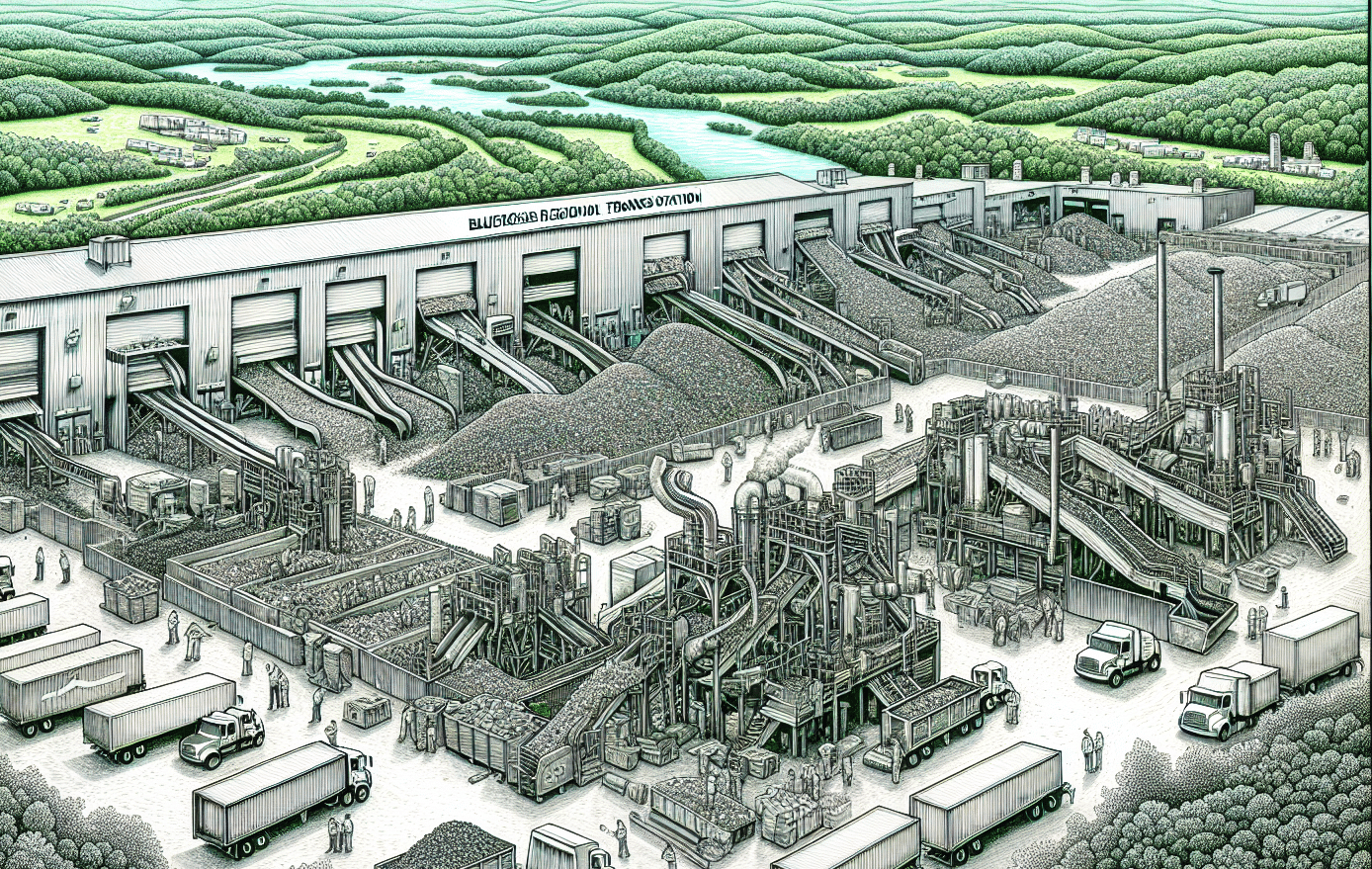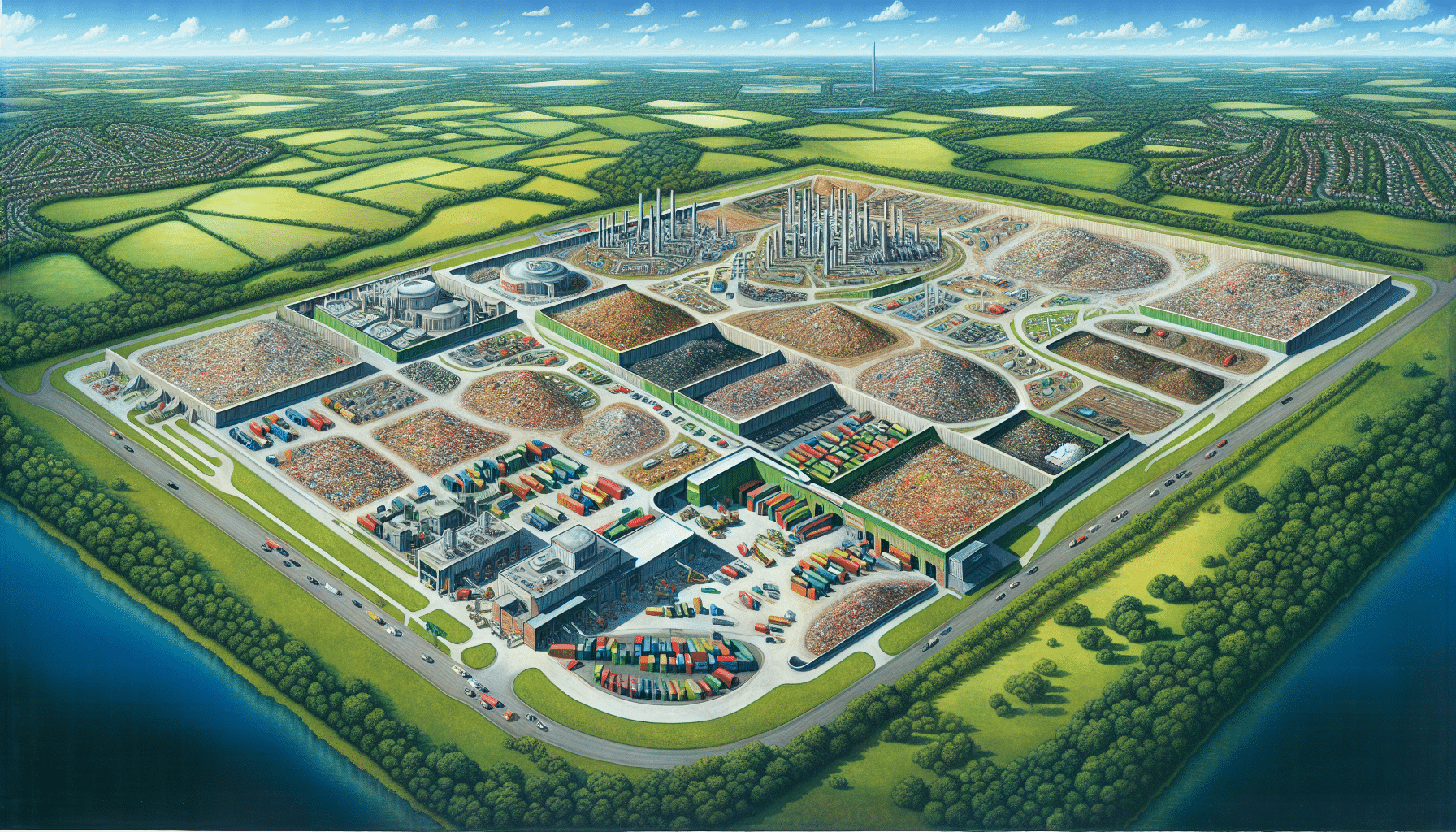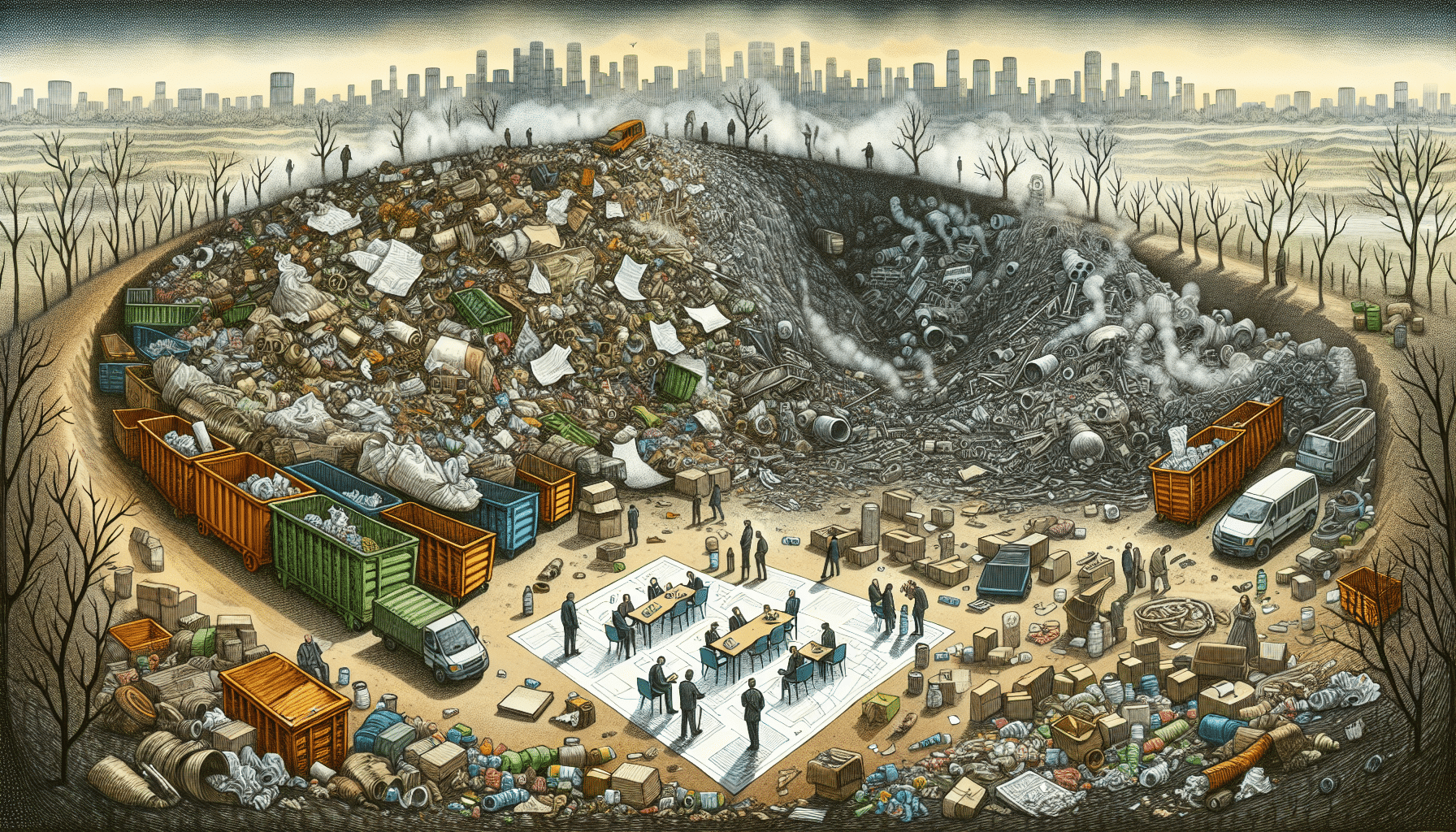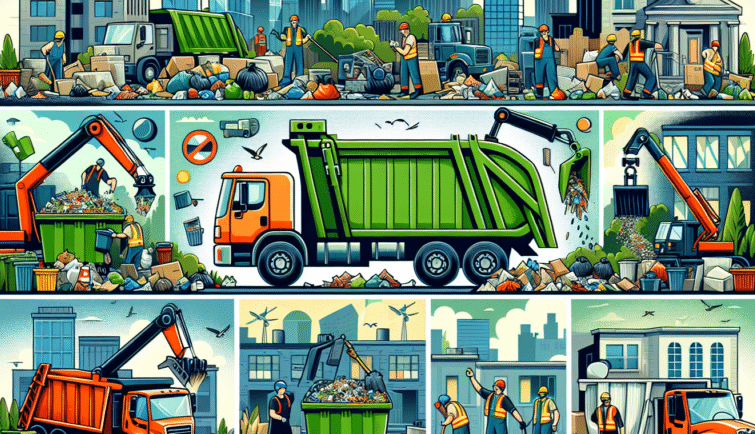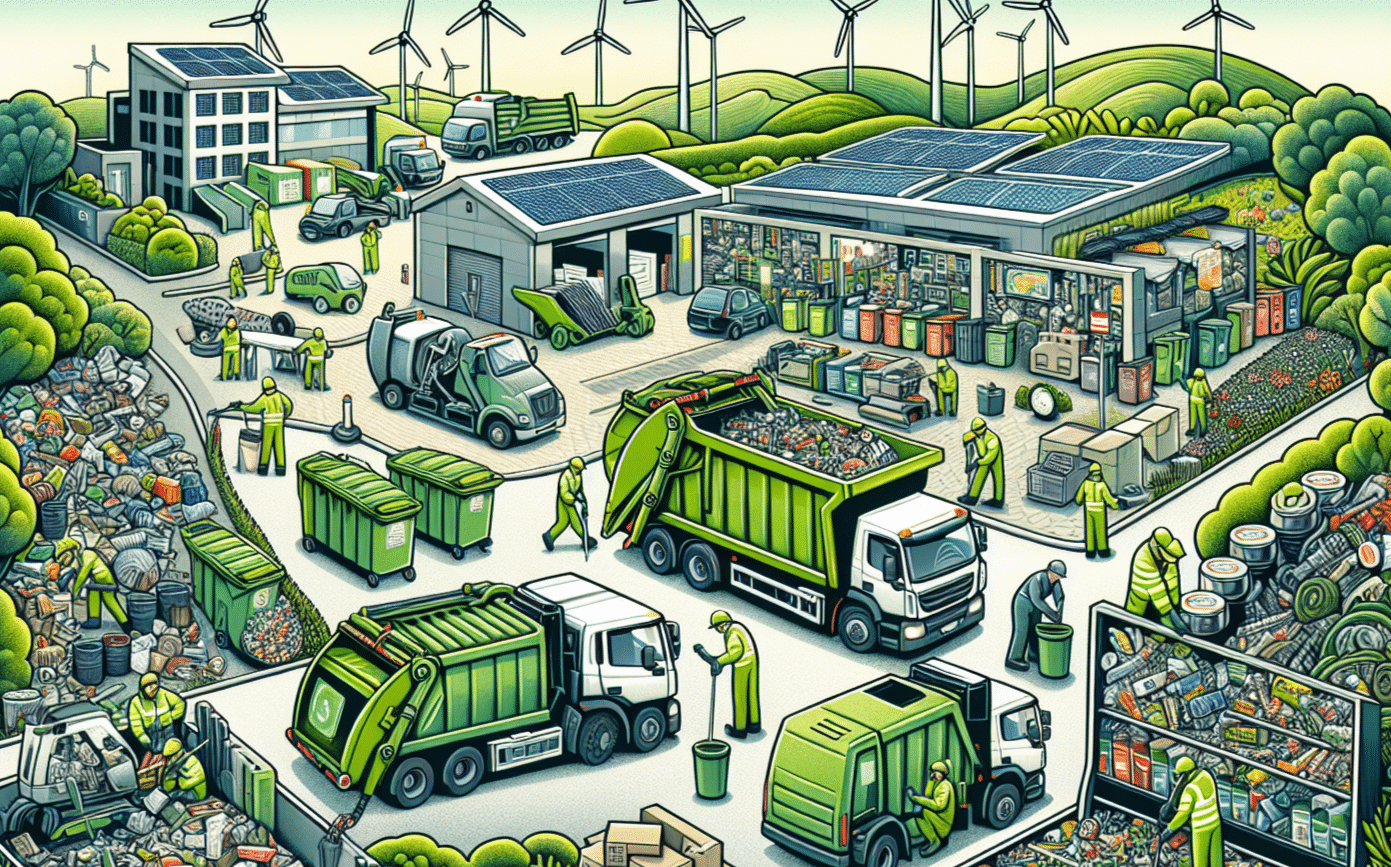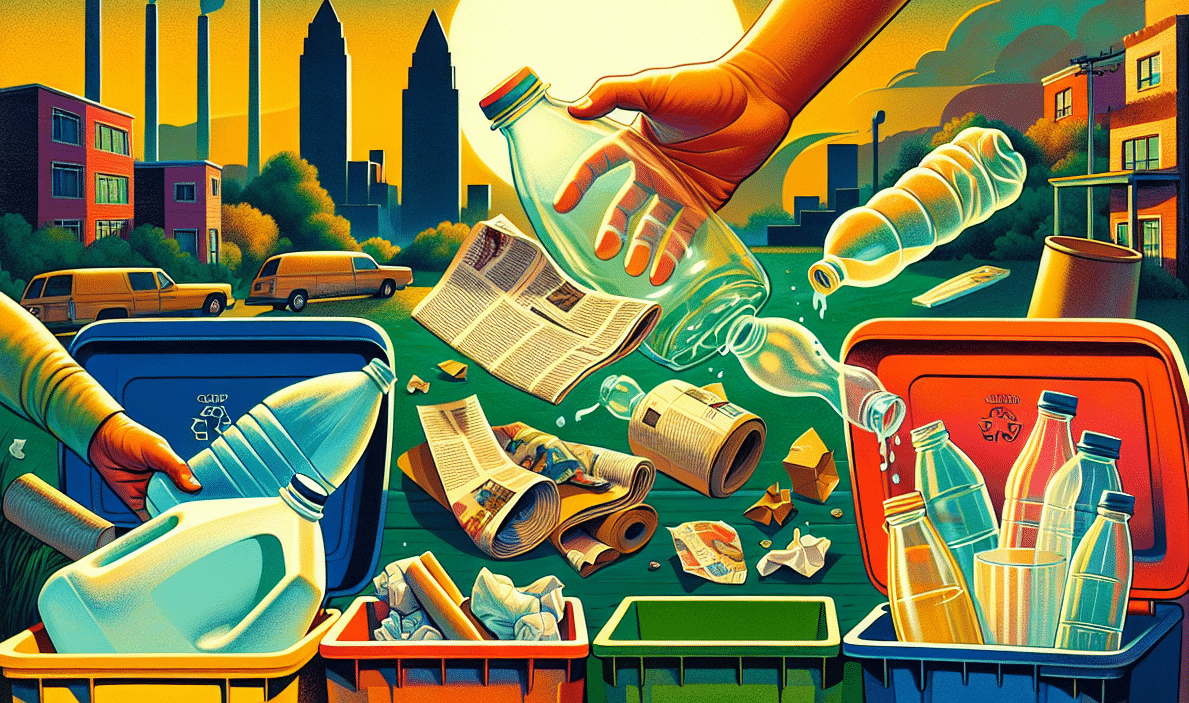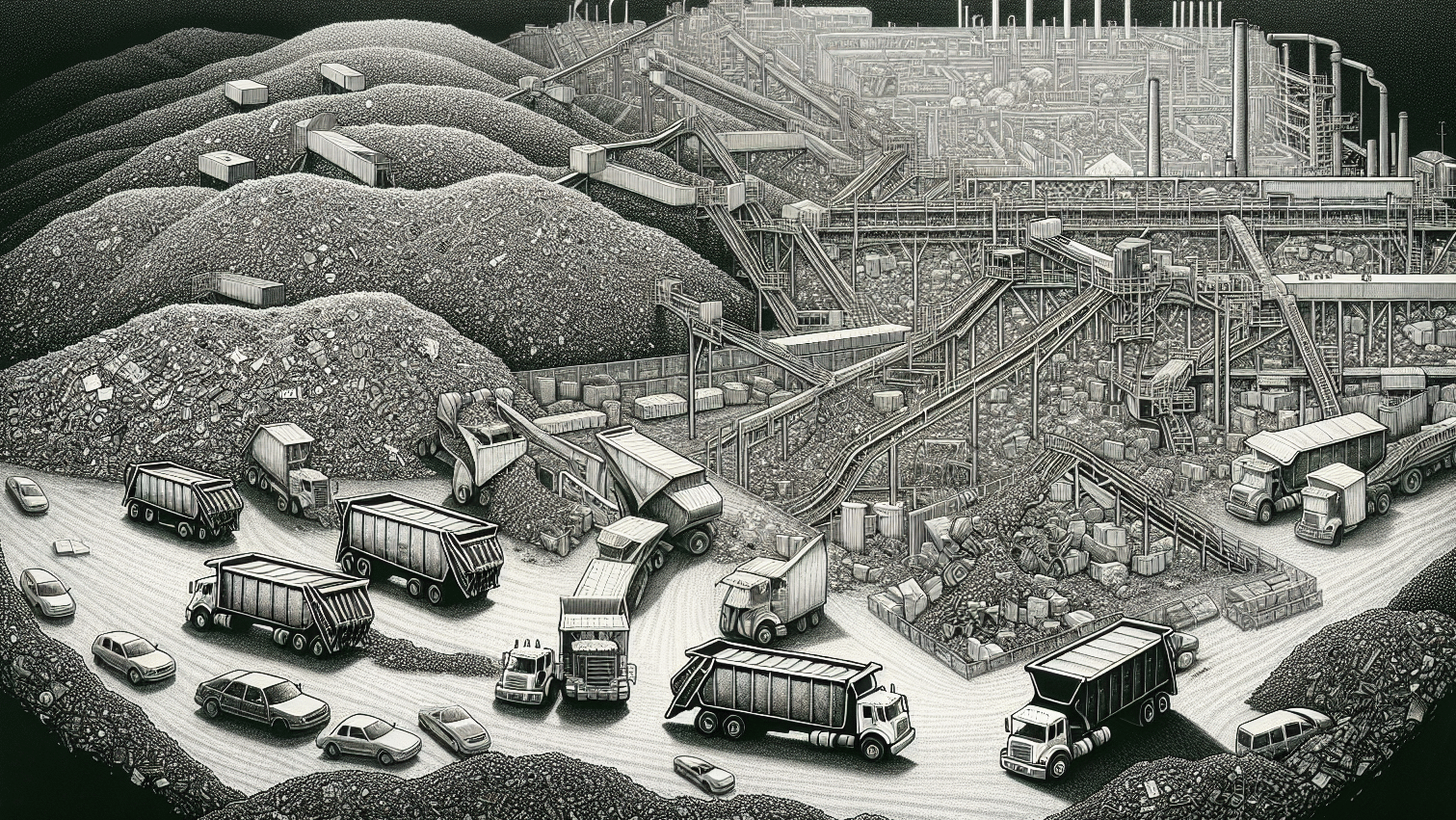This article confronts the harsh realities of global waste production, identifies the top offenders, and delves into practical solutions that are paving the way to sustainable management.
Key Takeaways
- Global municipal waste production is alarmingly high, with certain countries like the US leading in per capita waste, and China being the largest overall waste producer.
- Plastic waste, especially from single-use plastics and food packaging, is a significant environmental concern.
- E-waste is a growing contributor to global waste, with serious disposal challenges and risks due to hazardous materials. The presence of e-waste emphasizes the need for improved recycling technologies and waste management systems.
Global Waste Generation
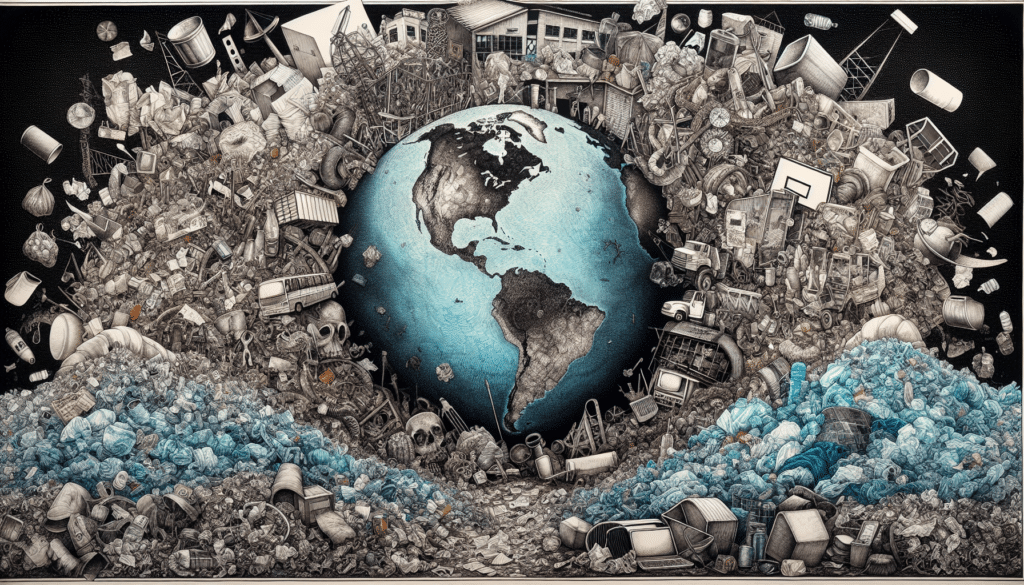
Every minute, the world produces a staggering 3,825 tons of municipal waste. That’s approximately 2.01 billion tons annually! In this article, we will examine the various types of waste we produce and pinpoint the key contributors to this worldwide issue.
Municipal Solid Waste
Municipal solid waste is a term for the everyday items we discard. Food packaging, clothes, bottles, and even electronics all fall into this category of waste. Organic waste, such as food and green waste, account for a staggering 65% of this waste stream.
Per Capita Waste Generation
The United States, Canada, and Australia are the current leaders in per capita waste generation, with the US generating a mind-blowing 2.58 kg of waste generated per person daily. This data emphasizes the magnitude of the waste management issues we confront globally.
Largest Waste Producers
China stands as the world’s largest producer of municipal solid waste, contributing over 15% to the global total volume, while the United States currently has the most waste per capita. Countries like Turkey also grapple with significant waste disposal issues, with large volumes of waste being discarded without proper management.
The Plastic Crisis

With its non-biodegradable nature and long-term environmental pollution, plastic waste has become a significant global concern.
Environmental Impact of Plastic Waste
Plastic pollution changes habitats, disrupts natural processes, and directly threatens wildlife, particularly in marine environments. Mismanaged plastic waste is a significant issue, with 1 to 2 million tons annually entering our oceans.
Global Plastic Waste Generation
The global production of plastic has surged from 2 million tons in 1950 to over 450 million tons, leading to an estimated annual plastic waste generation of around 350 million tons. Half of the plastic produced worldwide is used only once before being discarded, often accumulating in landfills.
Food Packaging and Single-Use Plastics
Single-use plastics and food packaging stand as significant contributors to the plastic waste crisis. Throw-away culture, which prioritizes convenience over environmental sustainability, results in half of the 300 million tons of plastic produced globally each year being single-use plastics. In an effort to help mitigate this impact, the European Union has implemented a directive banning certain single-use plastics and mandating producer responsibility for their packaging’s life cycle.
Electronic Waste: A Growing Concern

Electronic waste, or e-waste, is another significant contributor to our global waste problem. With 50 million tons produced annually worldwide, e-waste poses significant disposal challenges due to its hazardous materials.
E-Waste Production
E-waste generation has increased rapidly due to technological integration into daily life and the shortening lifespans of electronic devices. The amount of e-waste produced in 2022 alone contained an estimated $91 billion worth of metals.
Disposal Challenges
Recycling e-waste is a challenging task due to the complex composition of electronic devices, making e-waste more expensive to process. Inconsistencies in state regulations, especially in the United States, further exacerbate the challenges of e-waste disposal.
Health and Environmental Risks
Improper disposal of e-waste poses serious environmental and health risks. Toxic substances like lead, mercury, and cadmium can leak into natural habitats and groundwater, posing a significant environmental risk.
Waste Management Systems Around the World
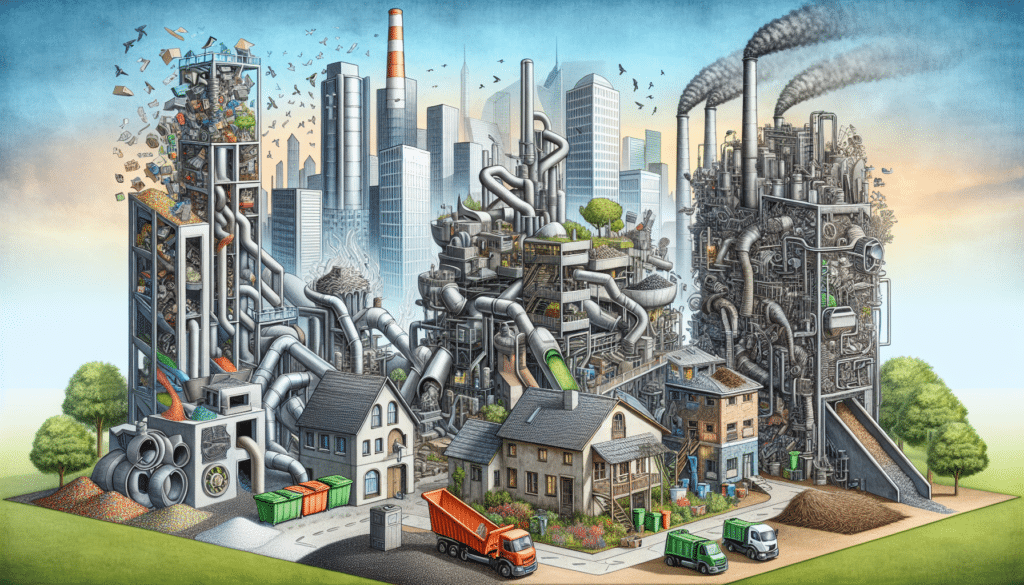
Waste management systems vary globally, reflecting different economic realities and international policy approaches.
High-Income Countries
High-income countries, with their robust regulatory frameworks and infrastructure, have made significant strides in waste management. With a focus on recycling and composting, these countries are leading the way in sustainable waste practices. Technological advancements, such as smart garbage trucks and AI-based sorting systems, are also enhancing waste collection efficiency.
Upper Middle Income Countries
The rapid urbanization of upper-middle-income countries has led to the emergence of informal settlements, complicating the provision of adequate solid waste management services. Despite this, these countries have managed to achieve an average waste collection rate of 85%.
Low Income Countries
Low-income countries often struggle with waste management due to inadequate infrastructure, technology, and financial resources. The limitations in these systems frequently lead to reliance on incineration or unregulated disposal methods, causing significant environmental and health concerns.
Innovative Approaches to Waste Reduction

Despite the colossal scale of the global waste issue, innovative solutions to waste reduction are emerging, offering new ways to tackle this pressing issue.
Zero Waste Initiatives
Zero waste initiatives aim to reduce waste production and increase recycling rates. For instance, goals have been set to cut plastic waste by 50% and recycle 70% of it by 2030. Consumer practices, such as buying or donating slightly used items, can also decrease waste volume by extending product life-cycles.
Recycling Technologies
Technological advances are slowly changing the world of recycling. From AI-enhanced cameras in sorting machines to nanotechnology developing more robust materials for recycling, advances in technology are revolutionizing the recycling industry.
Waste-to-Energy Solutions
Waste-to-energy solutions, such as waste incineration and pyrolysis, offer alternative uses for waste materials. These methods can streamline waste collection and enhance overall management efficiency, providing a promising direction for future waste management strategies.
Case Studies: Successful Waste Management Strategies
Some examples of successful waste management strategies include South Korea’s effective sustainable waste management system to OECD (The Organization for Economic Cooperation and Development) countries’ commendable recycling rates.
South Korea’s Waste Management Success
South Korea stands as a leading example of sustainable waste management. With a recycling and composting rate around 60%, the country has effectively implemented strict regulations, penalties for noncompliance to recycle, and incentives to report recycling violations. As a result, South Korean citizens have actively reduced their household waste production to approximately 1.02 kilograms per day.
OECD Countries’ Recycling Rates
Despite facing significant challenges in managing high volumes of plastic waste, OECD countries have managed to recycle at least 9% collectively. While there is still room for improvement, these countries are leading the way in responsible waste management.
Private Sector Innovations
Private sector companies are stepping up to reduce waste and promote sustainability. Companies across multiple platforms are designing products for a circular economy, focusing on durability, repairability, and recyclability.
The Role of Consumers in Reducing Waste
By adopting sustainable lifestyles and making mindful decisions before shopping, consumers can significantly influence waste reduction efforts.
Encouraging Sustainable Lifestyles
Consumers can lessen their environmental footprint by purchasing minimally packaged and recycled products, composting food scraps, and donating unused food to food banks or shelters. Choosing to borrow, rent, or share items instead of purchasing them can also significantly conserve resources and lessen waste output.
Climate Change and Waste
Waste not only litters our environment but also fuels climate change. From the gasses produced in landfills to the methane emissions from waste decay, the connection between waste and climate change is undeniable.
Greenhouse Gas Emissions from Waste
Single-use plastics contribute significantly to greenhouse gas emissions, releasing up to 213 million metric tons annually. Effective waste management and consumer choices, such as reducing and reusing, can lessen the need for new raw materials and significantly reduce greenhouse gas emissions.
Landfills and Methane Production
Landfills are a significant contributor to global methane emissions. In fact, landfills are responsible for over 15% of global methane emissions. Methane is a potent greenhouse gas, and its production in landfills through the anaerobic decomposition of waste poses a significant environmental challenge. The continuous production of methane and other landfill gasses pose challenges to achieving global climate goals due to their significant impact on atmospheric warming.
Summary
The global waste crisis is a complex issue and involves various factors from consumerism to legislative frameworks. However, with innovative solutions, sustainable lifestyle choices, and effective waste management systems, we can hope for a future where the amount of waste produced globally is significantly reduced.
Frequently Asked Questions
What are the main types of waste generated globally?
The main types of waste generated globally are municipal solid waste, plastic waste, and electronic waste.
How is plastic waste impacting the environment?
Plastic waste negatively affects ecosystems and wildlife, particularly in marine environments, and contributes to long-term environmental pollution.
What challenges are associated with managing electronic waste?
Managing electronic waste is a complex and costly process due to the hazardous materials used in making them.
How do different countries handle waste management?
Different countries handle waste management differently based on their income levels and available resources. High-income countries usually have efficient waste management systems, while low-income countries may struggle due to inadequate infrastructure and financial resources.
What can consumers do to help reduce waste?
Consumers can reduce waste by making mindful choices like buying products with minimal packaging and opting for products made with recycled materials. These small changes can have a big impact on waste reduction.






































































